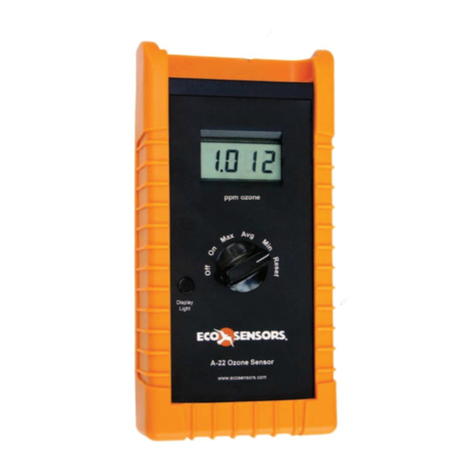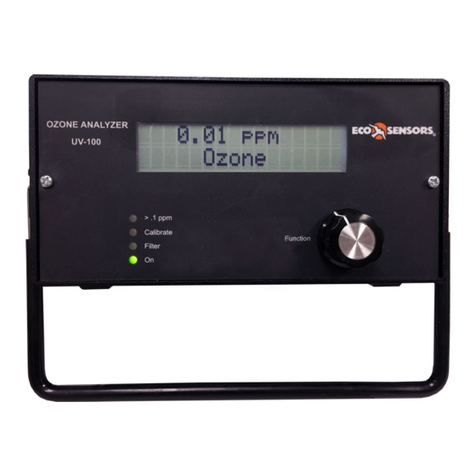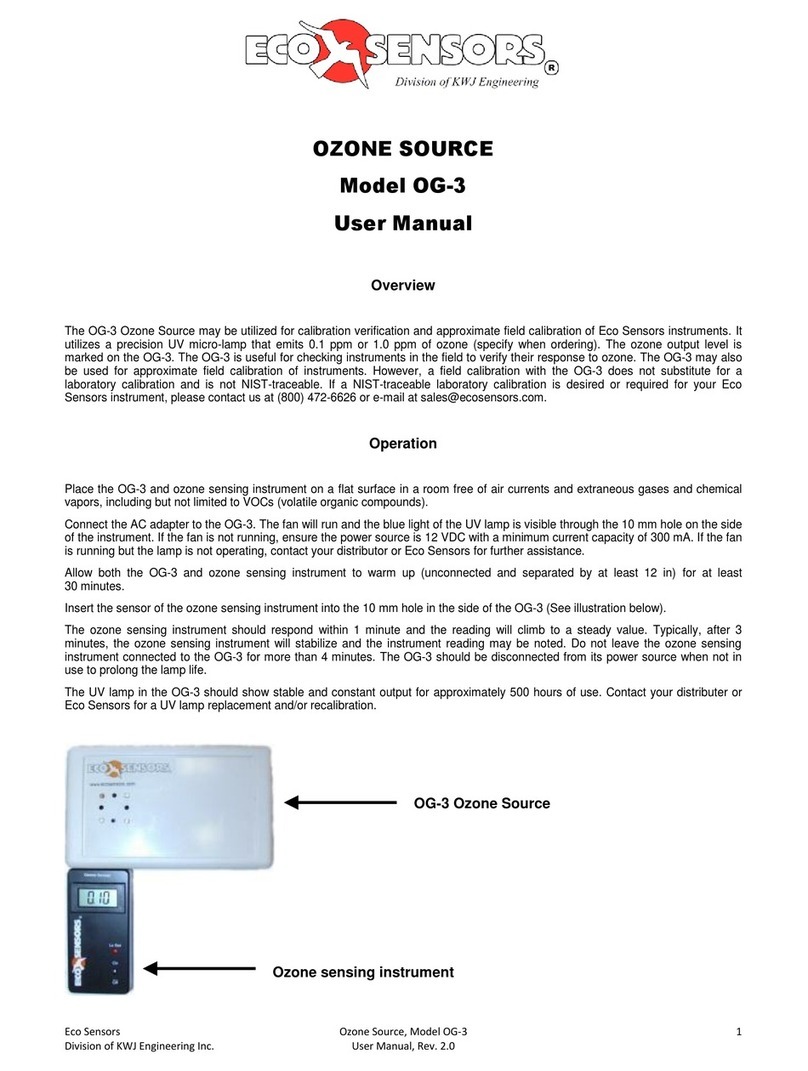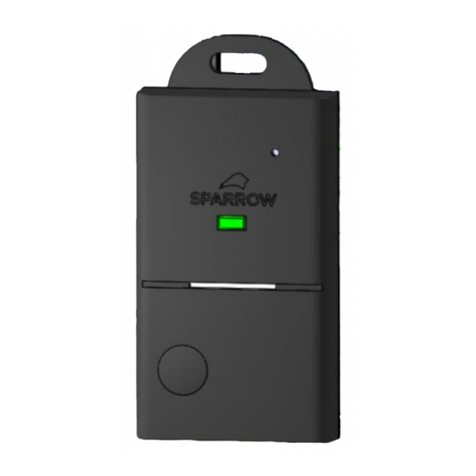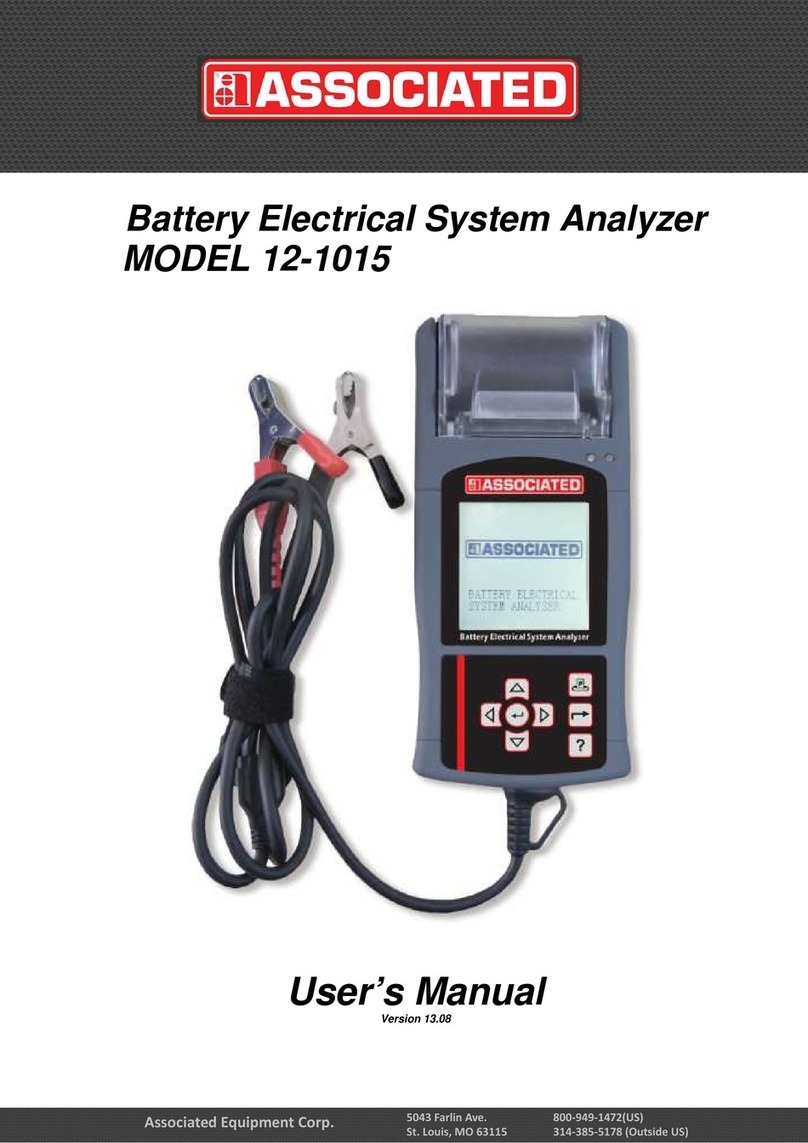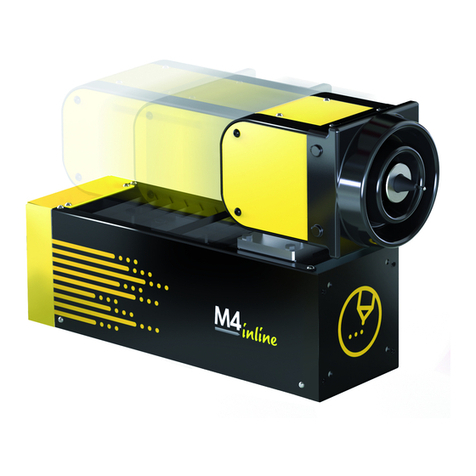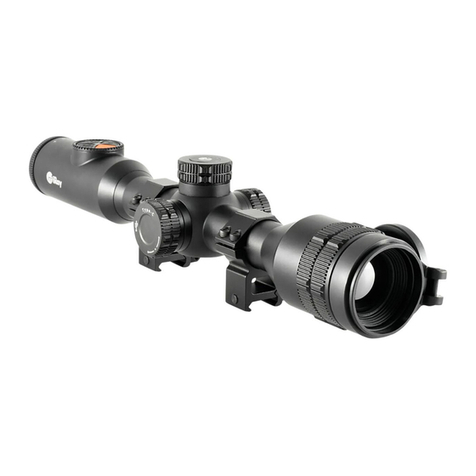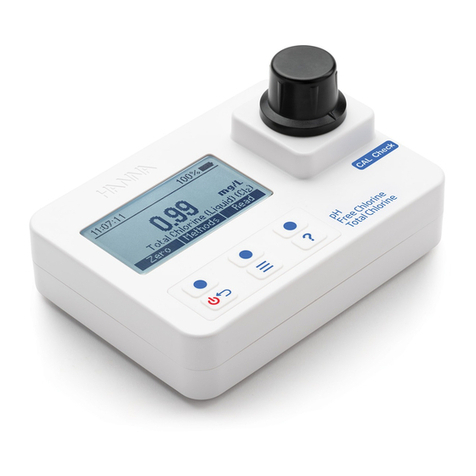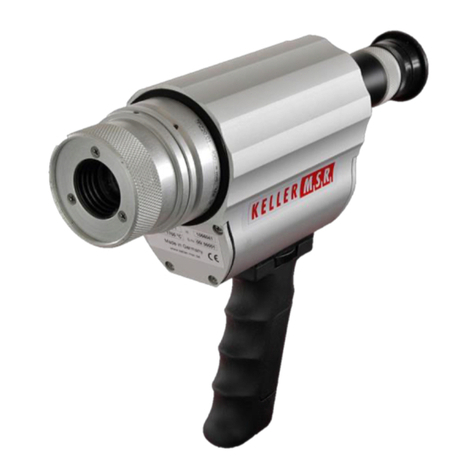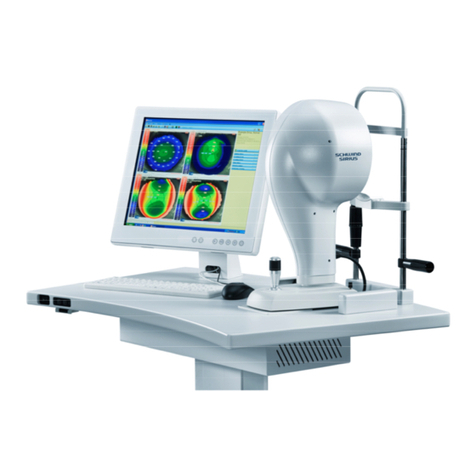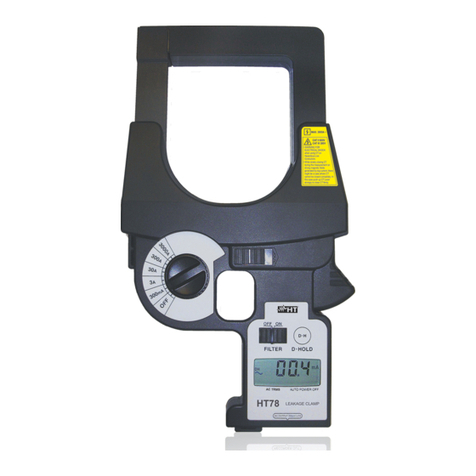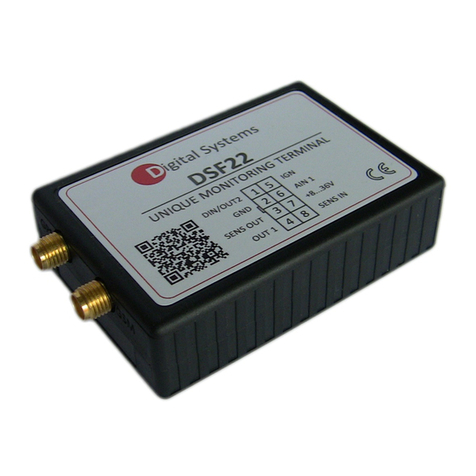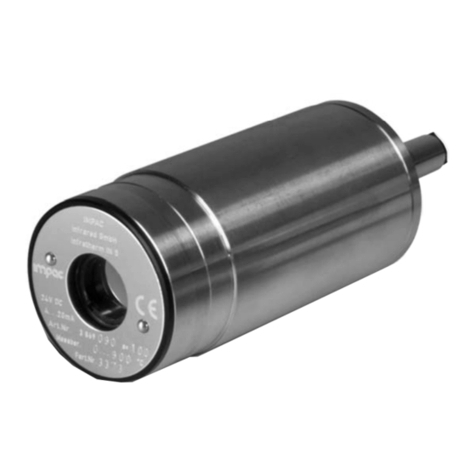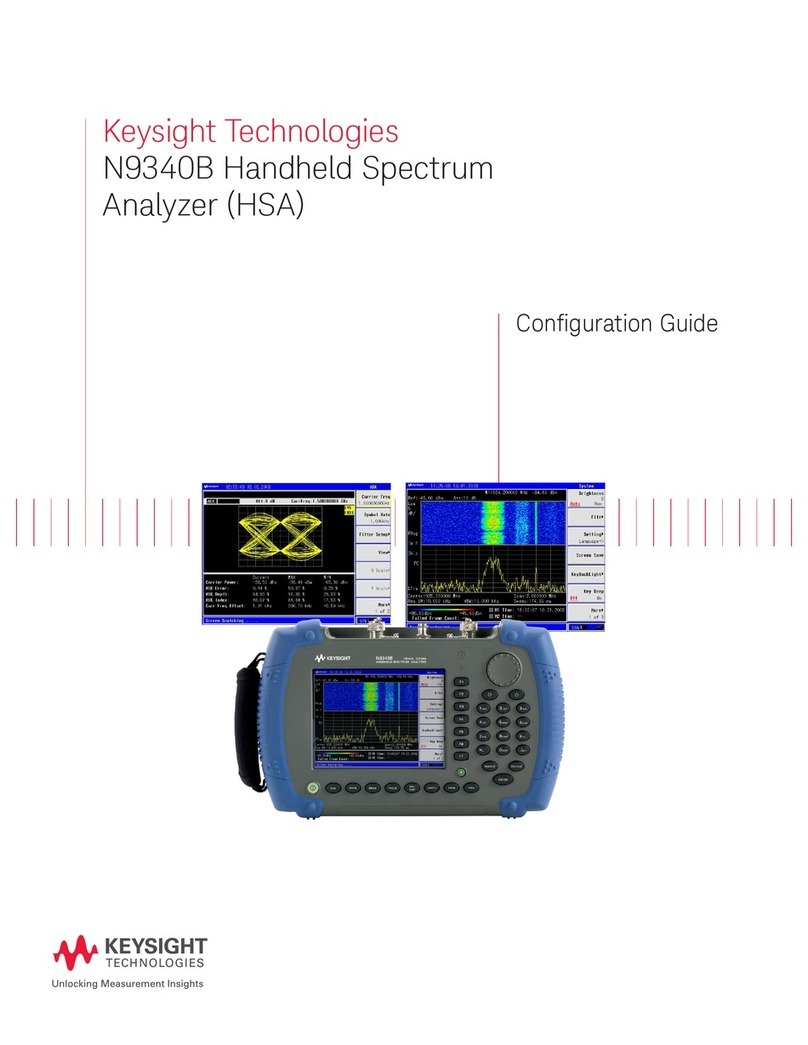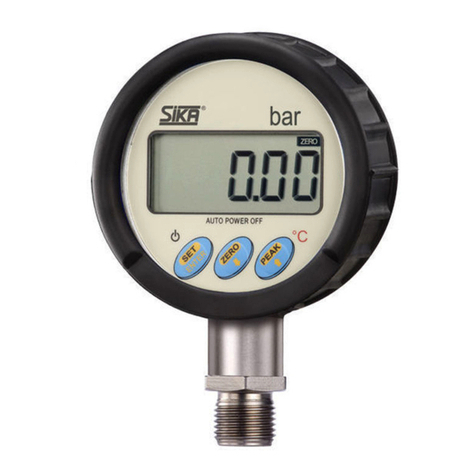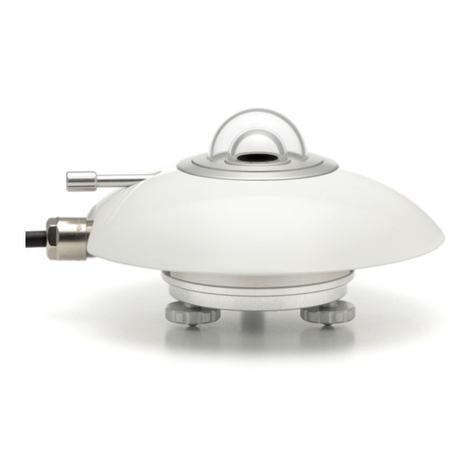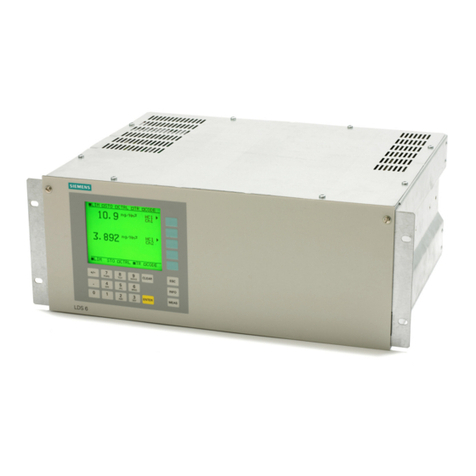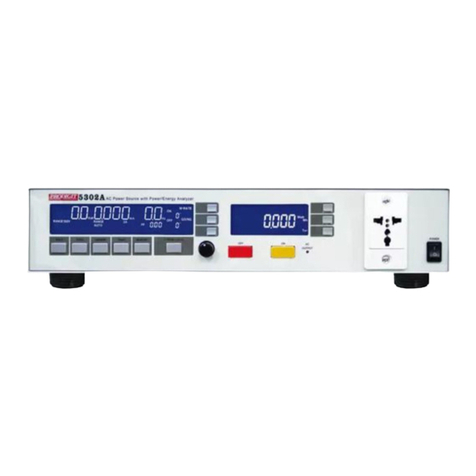ECO Sensors EcoZone EZ-10W User manual

ECO SENSORS, INC.
Portable Dissolved Ozone Meter
EcoZone™ Model EZ-10W
INSTRUCTIONS FOR USE
Before you read further! Be sure that the EZ-10W warms up for at least 15 minutes. It is
highly recommended to warm-up the EZ-10W overnight if it has not been used for over a
week or if it has been stored near chemicals.
GENERAL DESCRIPTION
Ozone is easy to sense, but measurement can be very counter intuitive and tricky.The Eco
Sensors® EZ-10W makes dissolved ozone sensing simple and inexpensive. Its principle of
operation is using a semiconductor sensor to measure ozone in the air headspace over
agitated ozonated water. The instrument is not a primary standard and is sold for general
monitoring rather than precise measurements. It can be used outdoors for short periods at
moderate temperatures.
OPERATION
There is no off-on switch.To power up the instrument, simply plug in the AC adapter (12 volts
DC).The display will light up and then will retreat a few seconds to one or two green bars.The
first green bar is the“on” pilot light;any additional illuminated LED colors bars indicate ozone
concentrations.
FOR AC OPERATION:Put the switch in the AC Power & Bat Chg position.This is also the
position for charging the batteries.
FOR BATTERY OPERATION:Put the switch in the Battery position.The instrument will have
about 8 hours of usage from fully charged batteries.The batteries probably will have some
charge when the instrument is delivered. Recharging fully discharged batteries will require
14 hours of AC operation (overnight) or about one hour of charging per 30 minutes of use.
When the batteries are low, the first green bar (“on”) will start to get dim and it will begin to
blink.Operation of the instrument should be concluded.
Preparing a sample and taking a reading
You must work quickly yet accurately because the ozone is reverting back to oxygen.
1. Fill the beaker with a 50 ml sample of ozonated water.
2. Pour this sample into the 500 ml bottle, screw on the cap, give several brisk shakes,
remove the cap, and slide over the sensor cap wired to the instrument.
3. Note the instrument reading after 1 minute 15 seconds.
Procedure before doing the next reading
1. Rinse the beaker thoroughly with clean tap water, distilled water or best, deionized water.
2. Completely fill the 500 ml bottle with clean tap water, distilled water or deionized water,
shake, and discard the water.This is to flush out all residual (in air) ozone.
Other ozone ranges
1. To do a more sensitive reading (for example .5 ppm = .1 ppm): Put 5x (250 ml) ozonated
water in the 500 ml bottle and divide the LED readings by 5. Recommended only as a
qualitative measure to sense any residual ozone.
2. To do less sensitive reading (for example 0-7 ppm): Mix the 50 ml water sample with 450
ml of pure (preferably deionized water), pour 50 ml of the diluted mixture into the 500 ml
bottle, and multiply the LED readings by 10.
DATA READOUT
LED Display - This is a ten segment “bar graph” or “color bar” display that reads 4 green
segments, three yellow segments, and three red segments.The first green segment serves
as a pilot light to indicate that the instrument is receiving power and when blinking that there
is a low battery condition. Calibration of the display is:
BAR PPM of Dissolved Ozone BAR PPM of Dissolved Ozone
1st green “on” 2nd yellow .3
2nd green .1 3rd yellow .4
3rd green .15 1st red .5
4th green .2 2nd red .6
1st yellow .25 3rd red .7
ACCURACY AND CALIBRATION
The EZ-10W calibration is shown above and is marked on the front face of the instrument.
The instrument is most accurate in the .2-.5 ppm range and should be within 20%. High
concentrations ofVOCs in the air or water will reduce the instrument’s accuracy by reducing
its readings.Chlorine such as in swimming pools and salt water are not a problem.
SPECIFICATIONS
• Sensor: Heated metal oxide semiconductor.
• Range: .1-.7 ppm of dissolved ozone.
• Response time: 1 1/4 minutes to make a reading.
• Accuracy: within 20% in the .3-.7 ppm range depending on the conditions.
• Recommended general function check: every three months. Recommended calibration
check: every year.
• Temperature range:20-30 degrees C (68-86 degrees F).
• Size: 85 X 35 X 60 mm (3 1/4" X 1 3/8" X 2 3/8")
• Weight:154 grams (6 oz.)
• Power requirement: 12 volts DC at 300-500 mA. (120 volt 60 Hz.AC adapter supplied to
North American customers) or self-contained rechargeablebatteries.SeeTechNote P-101
for complete adapter specifications.
• Batteries: Self-contained NiMH special design usable 8 hours after a full charge.
• Fusing:Self-resetting fuse that triggers at 250 mA.current or more than approximately 24
volts input. Has an overvoltage protection diode to eliminate supply voltage spikes and
surges.
• Enclosure material: flame retardant ABS.
SERVICE AND MAINTENANCE
Please contact your distributor about service.In emergencies, the factory service number is
be maintained and recalibrated annually.Factory service plans are available.
Sensor -The sensor is the only components of the instrument that is likely to fail or to require
checkups.We recommend that the sensor be checked for satisfactory operation every three
months, or more often in environments that are dusty, have high levels of chlorine or halogen
compounds, or where there is dust or water spray.The sensor should be observed to see if it
is responsive to changes in ozone level and if the ppm readings are reasonable.This can be
done with the Eco Sensors model OG-1 hand-held ozone generator.
Indications that the sensor is deteriorating or has failed are:
• Its response is significantly lower.
• The ozone concentration readings seem too high and tend to get even higher.
• The instrument doesn’t respond at all and/or the bar graph does not go down to the
green area after a brief warm-up.
Someofthese problemscan be compensated forbycircuitadjustmentsorsimple maintenance.
Sensor replacement, however, requires an instrument technician and should be done by Eco
Sensors or its authorized service representative.The sensor cap and cable must be replaced
as a unit and the instrument recalibrated.
Batteries - The batteries are rechargeable NiMH. They should last several years. For a
replacement battery pack (not available in stores) contact your distributor or Eco Sensors.
AC Power Adapters - AC adapters usually are burned out by power surges such as from
lightning, but the EZ-10W itself has protection against such surges. Replacement adapters
forNorthAmerican usage can be ordered from yourdistributoror Eco Sensors,Inc.;elsewhere
suitable adapters can be purchased from local electronic stores.Specifications are found in
our Tech Note P-101. PRECAUTIONS
• Allow at least 15 minutes warm up, and better, an hour or more. If the instrument hasn’t
been used for days or weeks, an overnight warm up will be helpful to “burn off” any
contaminants that may have been absorbed by the sensor.
• Read all instructions in this manual.
• Keep instrument dry. Never let water or other liquids into the sensor.
• Do not drop the instrument or subject it to continuous vibration.
• Do not store or operate the instrument in high levels of dust.
• Do not attempt to service the instrument yourself.You are likely to break the sensor
which will be expensive and time consuming to replace.
• Do not clean the instrument with cleaning chemicals or solvents. Clean it with a damp
cloth or with ArmorAll™.
• Do not let the white membrane seen in the sensor cap get wet or dusty. Damage to the
membrane or the sensor behind it will require a sensor subassembly replacement.
• If there are high concentrations ofVOCs in the air (such as alcohol or gas fumes) or in the
water (such as oils or gasoline) the accuracy of the instrument can be greatly reduced
(readings will be lowered). WARRANTY
Thisproductiswarrantedagainst defectsinmaterials and workmanship foroneyearfollowing
the date of purchase by the original owner. This warranty does not include damage to the
product as a result of misuse, accident, damage, modifications, or alterations, and it does not
apply if the instructions in this manual are not followed.
If a defect develops during the warranty period, Eco Sensors at its election will repair the
instrument or will replace it with a new or reconditioned model of equivalent quality. In the
event of replacement with a new or reconditioned model, the replacement unit will continue
the warranty of the original unit.
To return the instrument contact your distributor, or call Eco Sensors at (800) 472-6626 or e-
(RGA) number.
Except as provided herein, Eco Sensors makes no warranties, express or implied, including
warranties of merchantability and fitness for a particular purpose. Eco Sensors shall not be
liableforloss of use of this instrumentorotherincidentalorconsequentialdamages,expenses
or economic loss, or claims for such damage or economic loss.
This warranty gives you specific legal rights, and you may also have other rights which vary
from state to state.
RECORDYOUR SERIAL NUMBER HERE_____________________________________
KEEPTHIS MANUAL ANDWARRANTY FORYOUR RECORDS
Eco Sensors is a registered trademark of Eco Sensors, Inc.
EcoZone is a trademark of Eco Sensors, Inc. (c) Eco Sensors, Inc., 2001. Revision 8/01
DISSOLVED OZONE
PPM LEVEL
BAR GRAPH DISPLAY
ON
Battery
AC Power
& Bat Chg
MODEL EZ-10W
DISSOLVED OZONE METER
POWER SOURCE
SELECTION
PPM
Low Bat
When Blinking
.70
.60
.50
.40
.30
.20
.10
0
50 ml sample beaker
50
10
Sensor cap
slides over
bottle neck
After the
sample has
been shaken
in the capped
bottle.
Ozone in air flows from
shaken 50 ml ozonated
water sample.
500 ml sample bottle

PRINCIPLE OF OPERATION
Eco Sensors Model EZ-10W Dissolved Ozone Meter
Background
Eco Sensors, Inc. has developed a simple, low-cost dissolved ozone meter building upon techniques and insights we
have developed ‘in our very popular instruments used to sense and measure ozone in air. During the research and
experimentation process in developing this instrument, we sorted through lots of information about dissolved ozone.We
developed a new instrument which due to its low cost and simplicity will be especially applicable to water bottlers, pools
and spas, food processing, cooling towers, aquariums, wineries and other smaller systems.It is especially useful in many
cases for measuring residual dissolved ozone which indicates that ozone was present throughout the system.
Prior to the introduction of the Eco Sensors dissolved ozone instruments, dissolved ozone has generally been measured
by a number of methods, and all are considered to be frustrating.The most common ones are ORP meters, indigo test
kits with a colorimeter readout, and electrochemical sensor instruments.ORP is not specific for ozone and can be equally
influenced by any oxidizing constituent in the water such as chlorine. The indigo test kits give good specific ozone
readingsinthehandsofskilledtechnicians,but theydependonpackagedreagents.Theelectrochemicalsensorinstruments
can work well if they are constantly maintained.
The Eco Sensors Approach
The new Eco Sensors dissolved ozone meter was designed to have many of the best features of the instrument types
reviewed above.It is a basic new design based on exhaustive research to find a better way.A key concept is to release all
of the ozone from the sample water before measuring it by rapid agitation of the sample.The purpose of the vigorous
shaking of the sample bottle is to release virtually all the ozone from the water sample so that the ozone concentration
can be measured in the air space (“head space”) in the sample bottle.Our approach is to force nearly all of the ozone out
of the water.This results in a higher concentration than would result from the air-water equilibrium release described by
Henry’s law, and the measurement is much less temperature and pressure sensitive than would be realized from a
Henry’s law measurement.
Features off the Eco Sensors EZ-10W instrument include:
• Low in cost.No consumables
• The sensor and probe do not touch the water.
• Ozone specific.
• Insensitive to common concentrations of chlorine and salinity.
• Easily understood by non-technical personnel.
• Easy to check the calibration by standard kits and by Eco Sensors ozone sources.
• Light weight and pocket size.
RECOMMENDED ACCESSORY
Ozone Source for Checking Response and Approximate Calibration
Ozone Source Calibrator
Model OG-1 (battery operated)
Model OG-1 AC (AC adapter powered)
Generates sufficient ozone to quickly verify that the EZ-10W is responding properly and to check the calibration. Low
cost and portable.
Other ECO Sensors Measuring Instrument manuals
